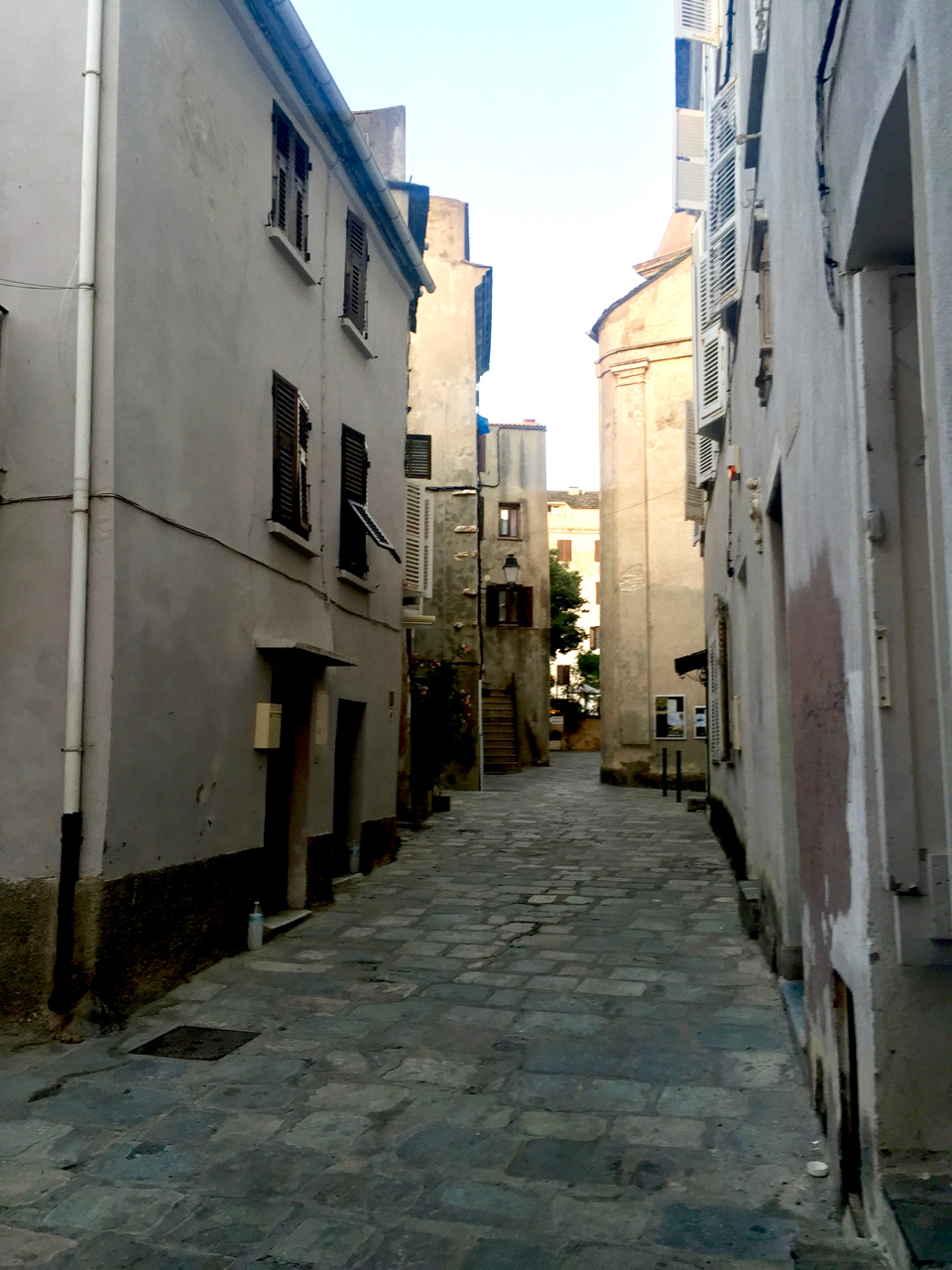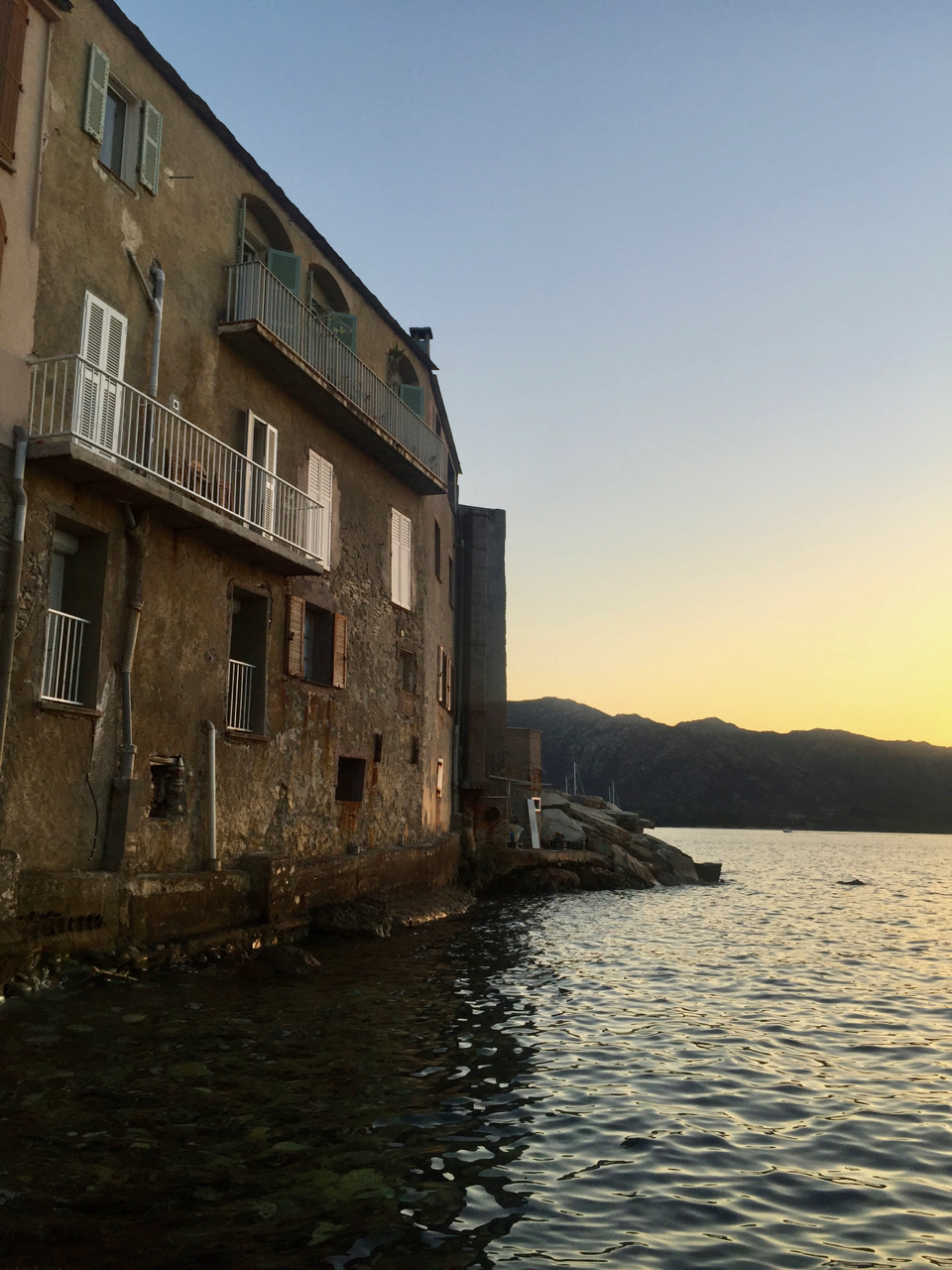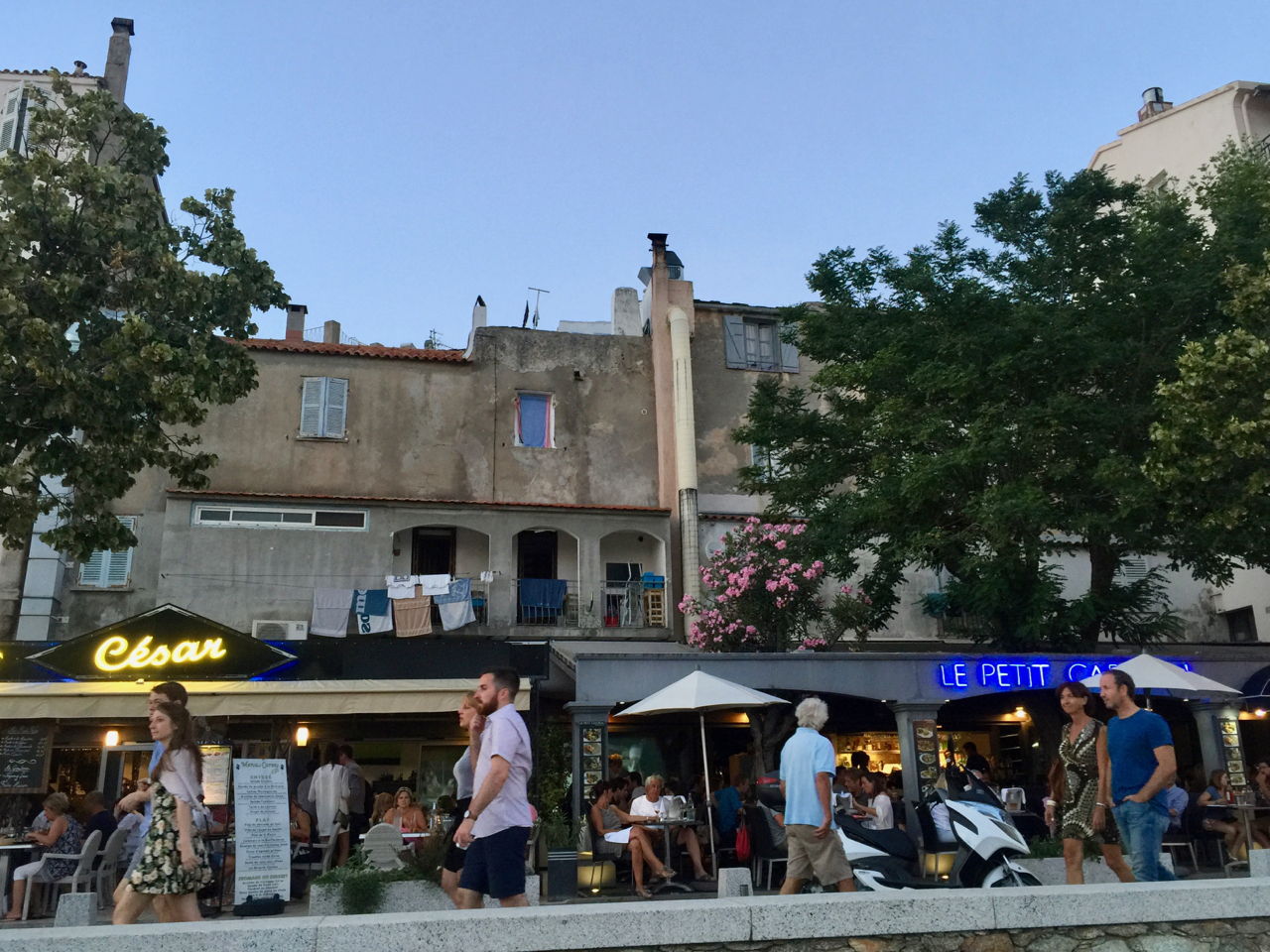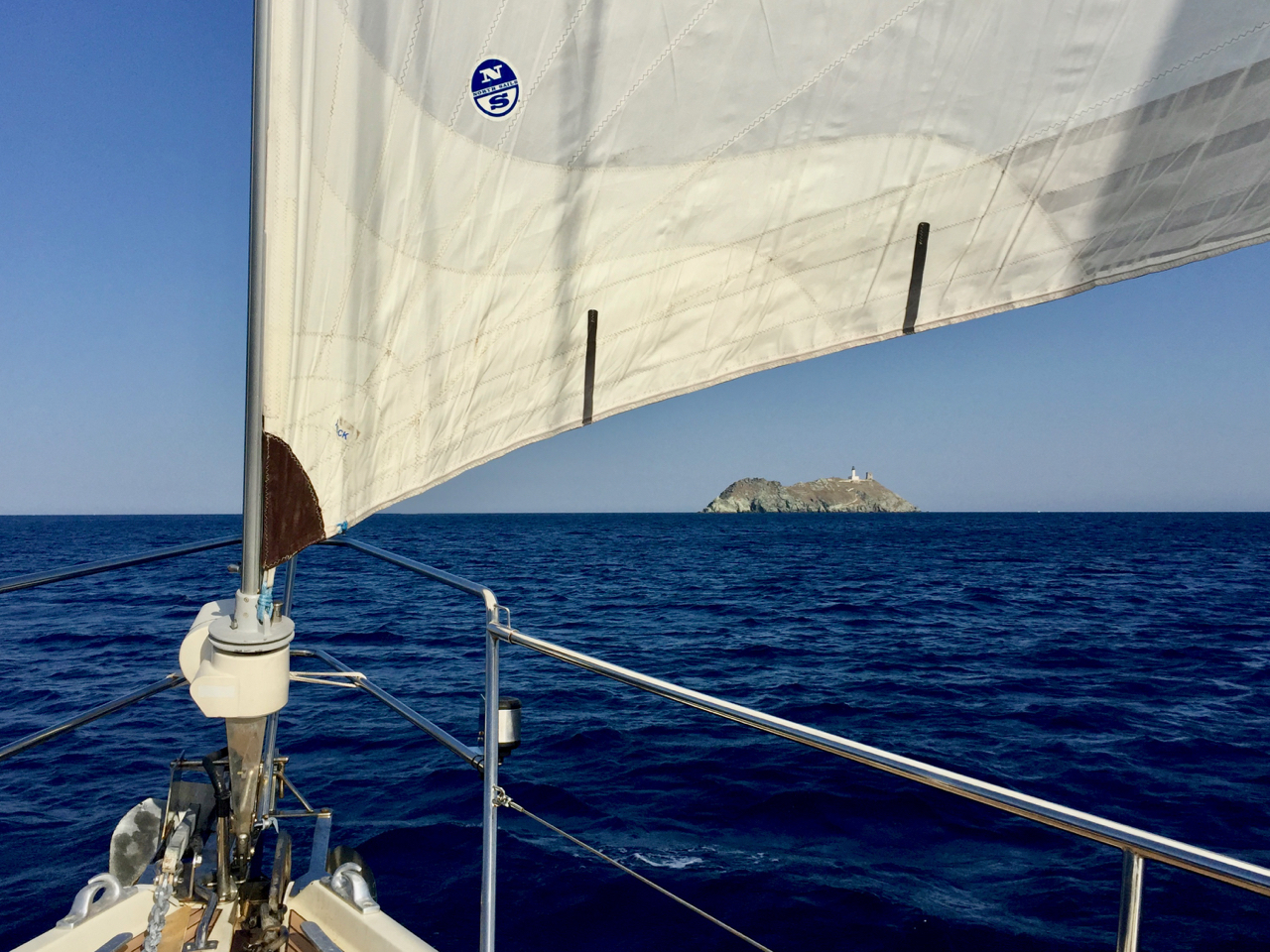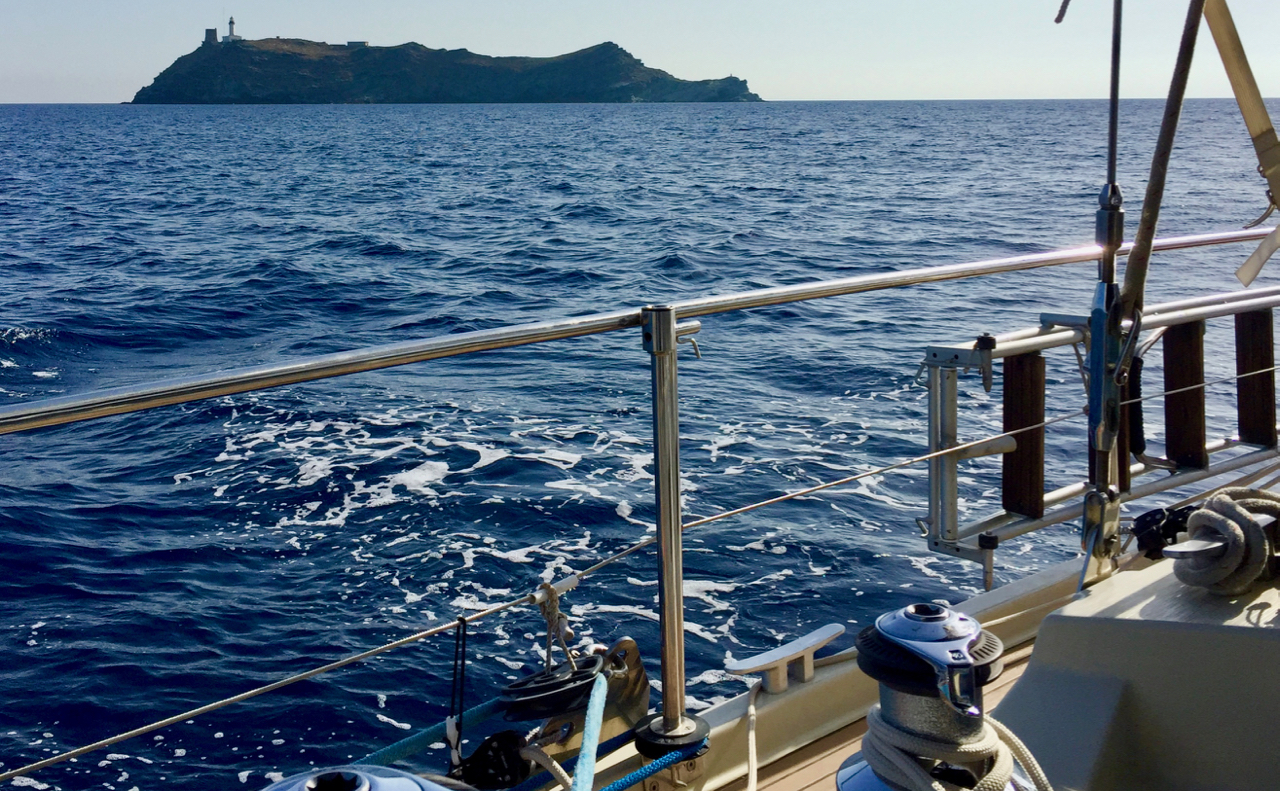Ptolomy wrote in the II century that Cæsiæ littus was Corsica's most famous city. In the VIII century, however, it was destroyed by a Moor raid. The city was re-built as Calvi by a local warlord in 1276 and it pledged allegiance to the Republic of Genoa in 1278.
And with Genoa the Calvesi stayed through thick and thin, for five centuries. Even as other parts of Corsica were at times held by Pisa, Aragon, the Pope, France, or the Turk, Calvi resolutely stayed Genoese. In fact, Calvi was the last Corsican city to yield to the French invasion of 1769 that consolidated Corsica a part of France.
It is because of that long association that from 1421 the city's motto is Forever Loyal City of Calvi.
Calvi from Peregrinus at anchor in the Golfe de Calvi. 3 August 2016, iPhone 6 Plus.


